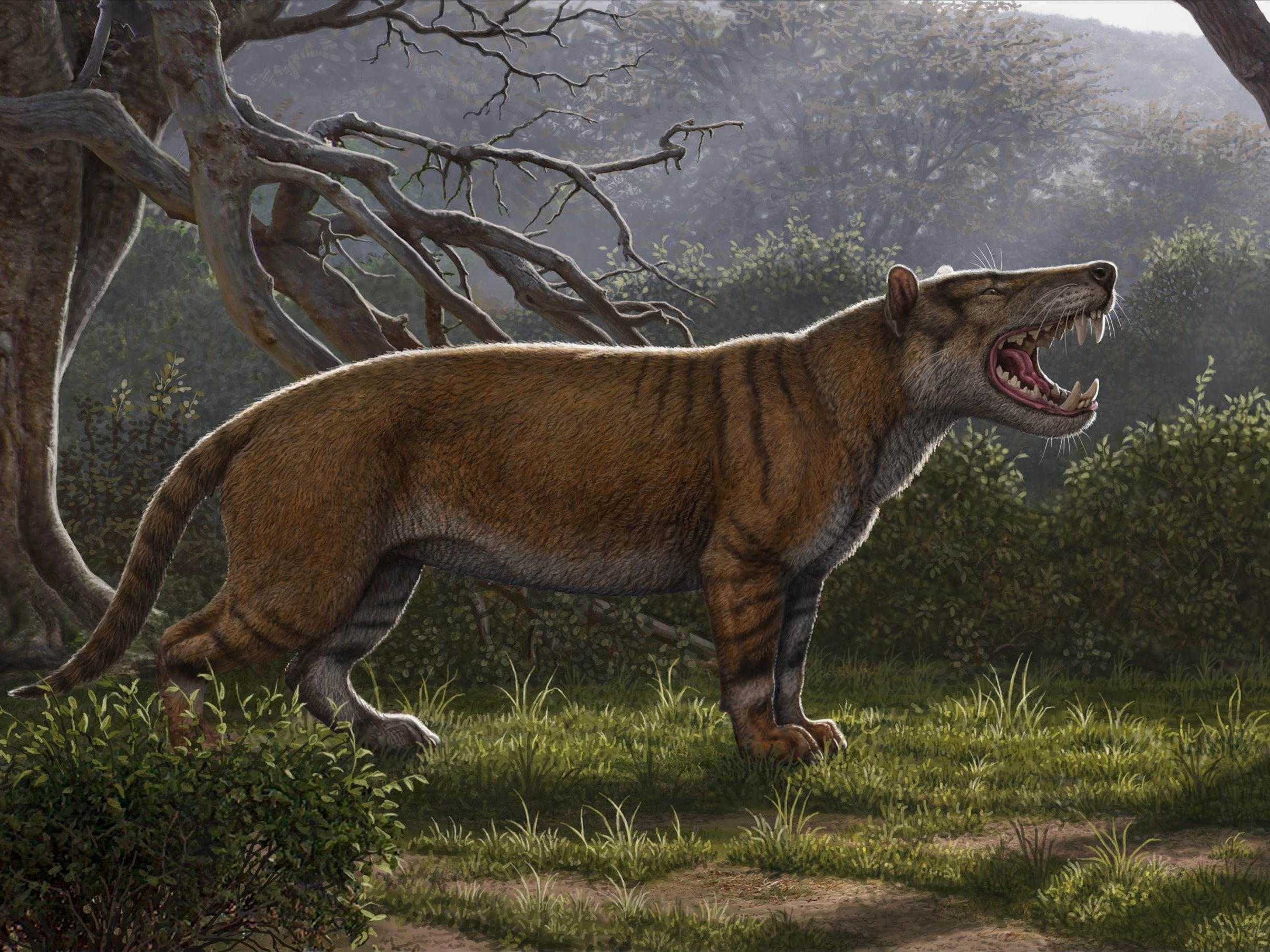Fossils of massive ‘lion’ larger than a polar bear discovered in Kenya
Once apex predator across Africa, species weighed over a tonne and half and ate elephant-like creatures

Just hours after it was revealed some bones in an old drawer in East Sussex belonged to Britain’s earliest rabbit, some more old bones found in a drawer in Kenya have put that find to shame, as they turned out to be fossils from a new species of meat-eating mammal larger than any big cat stalking the world today.
Paleontologists at Ohio University have announced the discovery of Simbakubwa kutokaafrika, a gigantic carnivore, bigger than a polar bear and with a skull as large as that of a rhinoceros but with massive piercing canine teeth.
Though it bears almost no relation to big cats today, the species name Simbakubwa, is Swahili for “big lion” because the animal was likely at the top of the food chain in Africa, as lions are in modern African ecosystems, the research team said.
The 22-million-year-old fossils were unearthed in Kenya decades ago as researchers combed the region for evidence of ancient apes.
Specimens including the animal’s jaw, portions of its skull, and parts of its skeleton were placed in a drawer at the National Museums of Kenya and not given a great deal of attention until Ohio University researchers Dr Nancy Stevens and Dr Matthew Borths rediscovered them, apparently immediately recognising their significance.
“Opening a museum drawer, we saw a row of gigantic meat-eating teeth, clearly belonging to a species new to science,” lead author of the study, Dr Borths said.
The research team calculated the species would have weighed up to 1.5 metric tonnes, and could have fed on elephant-like creatures.
“Based on its massive teeth, Simbakubwa was a specialised hyper-carnivore that was significantly larger than the modern lion and possibly larger than a polar bear,” he told AFP.
The species comes from a group known as the hyaenodonts, which were the first mammalian carnivores in Africa, and lived around 22 million years ago.
For about 45 million years after the extinction of the non-avian dinosaurs, hyaenodonts were the apex predators on the continent.
But after millions of years of near-isolation, tectonic movements of the Earth’s plates connected Africa with the northern continents, allowing floral and faunal exchange between landmasses.
Around the time of Simbakubwa, the relatives of cats, hyenas, and dogs began to arrive in Africa from Eurasia.
As the relatives of cats and dogs were going south, the relatives of Simbakubwa were going north.
“It’s a fascinating time in biological history,” Dr Borths said. “Lineages that had never encountered each other begin to appear together in the fossil record.”
The second part of the new species’ name, kutokaafrika, is Swahili for “coming from Africa” because Simbakubwa is the oldest of the gigantic hyaenodonts, suggesting this lineage of giant carnivores originated on the African continent and slowly moved northward to flourish for millions of years.
But despite the species longevity, hyaenodonts eventually went extinct across the world.
As global ecosystems changed between 18 and 15 million years ago with grasslands replacing forests, new mammalian lineages diversified.
“We don’t know exactly what drove hyaenodonts to extinction, but ecosystems were changing quickly as the global climate became drier. The gigantic relatives of Simbakubwa were among the last hyaenodonts on the planet,” Dr Borths said.
Dr Stevens, who co-authored the study, said: “This is a pivotal fossil, demonstrating the significance of museum collections for understanding evolutionary history.”
“Simbakubwa is a window into a bygone era. As ecosystems shifted, a key predator disappeared, heralding Cenozoic (most recent) faunal transitions that eventually led to the evolution of the modern African fauna.”
Join our commenting forum
Join thought-provoking conversations, follow other Independent readers and see their replies
Comments
Bookmark popover
Removed from bookmarks